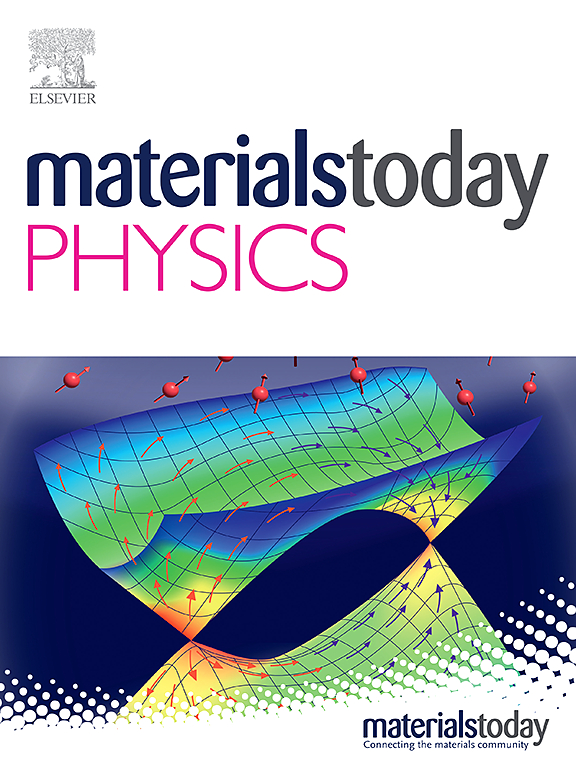Magnetic field effects on electrochemical CO2 reduction at bismuth based electrocatalyst
IF 10
2区 材料科学
Q1 MATERIALS SCIENCE, MULTIDISCIPLINARY
引用次数: 0
Abstract
The application of magnetic fields has garnered significant attention for enhancing the efficiency of electrocatalytic CO2 reduction (CO2RR), as it can improve electrocatalytic activity by augmenting mass transport, electron transport, and spin selectivity effects. This study investigates the distinct effects of a magnetic field on two non-magnetic electrocatalysts, bismuth-based metal-organic frameworks (Bi-MOF) and bismuth-based single-atom catalysts (Bi-SACs), to elucidate the mechanisms underlying their promotion of CO2RR for formate and CO production, respectively. When an external magnetic field of 0.9 T was applied, the Bi-MOF electrode showed a magnetic current gain of 63.2 %, with the Faradaic efficiency for formate increasing to 98.3 % at −1.2 V (vs. RHE). In contrast, the Bi-SACs electrode only achieved a magnetic current gain of 6.2%, with a Faradaic efficiency for CO of 82.4 % at −0.7 V (vs. RHE). Further in-situ spectroscopic experiments and microelectrode tests reveal that the differential magnetic field enhancement observed for the Bi-MOF and Bi-SACs electrodes arises from the spin-selective effect on radical pairs of CO2 with different adsorption states. These findings provide critical insights into the role of magnetic fields in modulating CO2RR pathways and highlight the potential for optimizing electrocatalytic performance through spin-selective processes.
磁场对铋基电催化剂电化学还原CO2的影响
磁场的应用在提高电催化CO2还原(CO2RR)效率方面受到了极大的关注,因为它可以通过增加质量输运、电子输运和自旋选择性效应来提高电催化活性。本研究研究了磁场对两种非磁性电催化剂铋基金属有机框架(Bi-MOF)和铋基单原子催化剂(Bi-SACs)的不同影响,以阐明它们分别促进甲酸盐和CO生成的CO2RR的机制。当外加磁场为0.9 T时,Bi-MOF电极的磁电流增益为63.2%,在-1.2 V(相对于RHE)下,甲酸的法拉第效率提高到98.3%。相比之下,Bi-SACs电极仅获得6.2%的磁电流增益,在-0.7 V(相对于RHE)下CO的法拉第效率为82.4%。进一步的原位光谱实验和微电极测试表明,在Bi-MOF和Bi-SACs电极上观察到的差异磁场增强是由于对具有不同吸附状态的CO2自由基对的自旋选择效应。这些发现对磁场在调节CO2RR通路中的作用提供了重要的见解,并强调了通过自旋选择过程优化电催化性能的潜力。
本文章由计算机程序翻译,如有差异,请以英文原文为准。
求助全文
约1分钟内获得全文
求助全文
来源期刊

Materials Today Physics
Materials Science-General Materials Science
CiteScore
14.00
自引率
7.80%
发文量
284
审稿时长
15 days
期刊介绍:
Materials Today Physics is a multi-disciplinary journal focused on the physics of materials, encompassing both the physical properties and materials synthesis. Operating at the interface of physics and materials science, this journal covers one of the largest and most dynamic fields within physical science. The forefront research in materials physics is driving advancements in new materials, uncovering new physics, and fostering novel applications at an unprecedented pace.
 求助内容:
求助内容: 应助结果提醒方式:
应助结果提醒方式:


